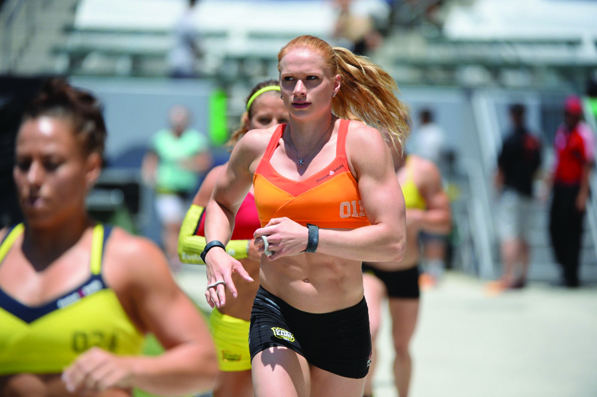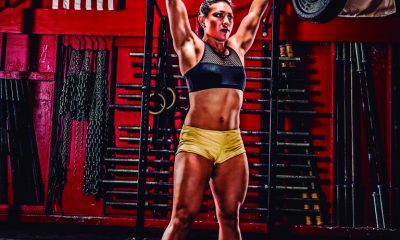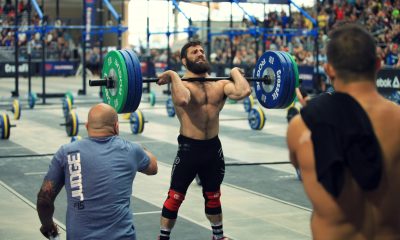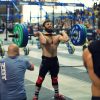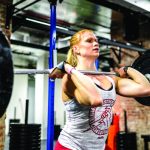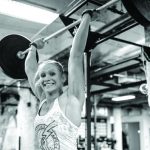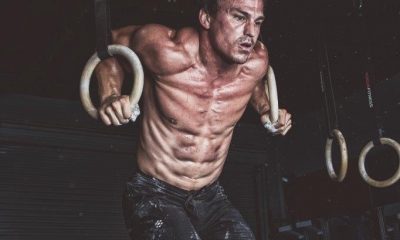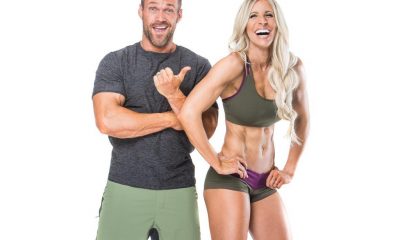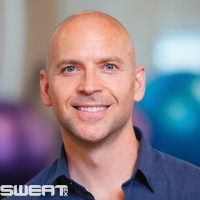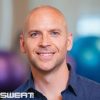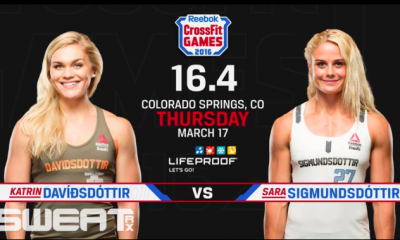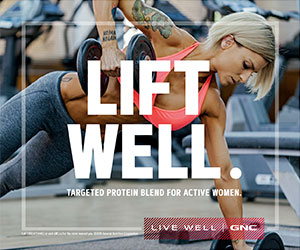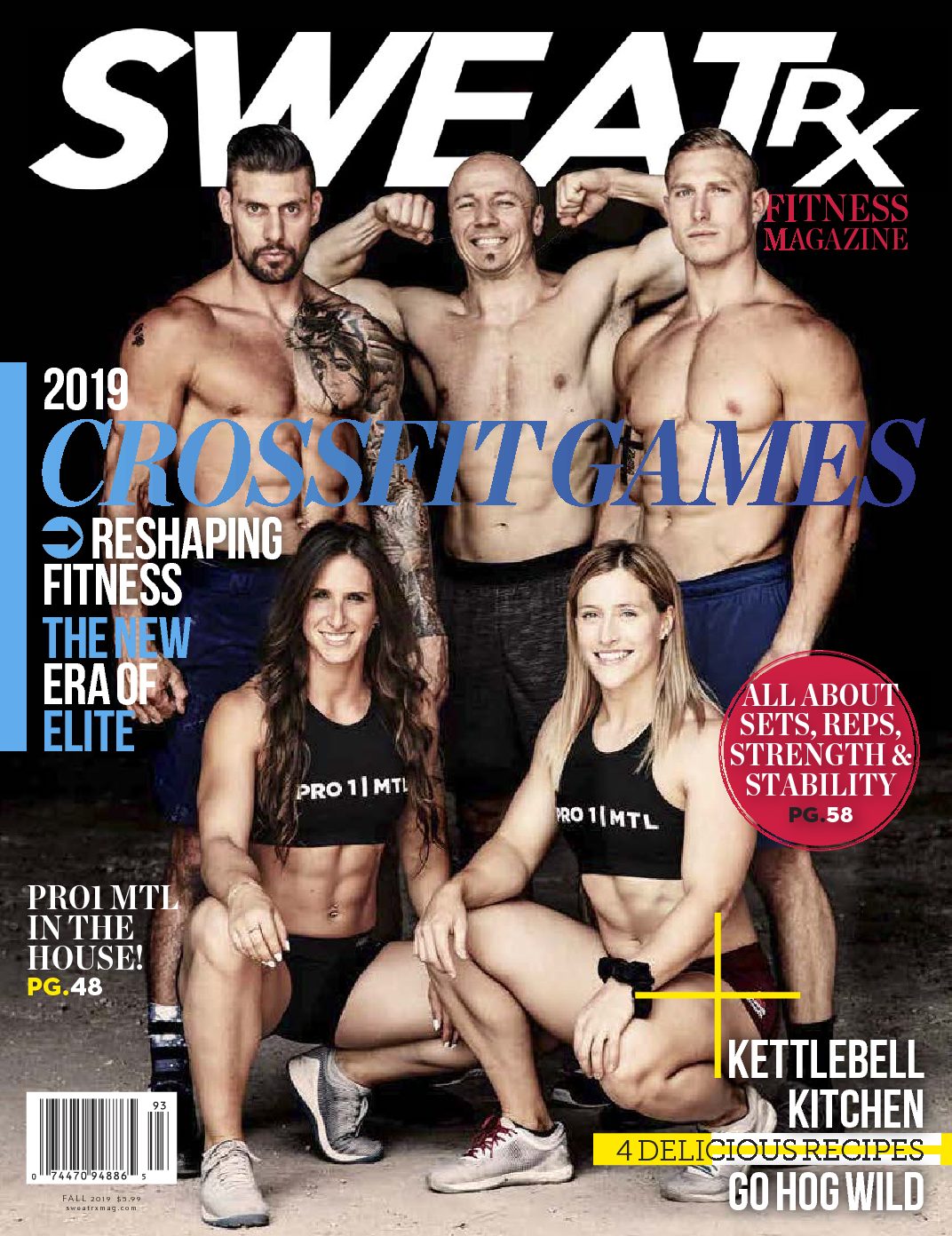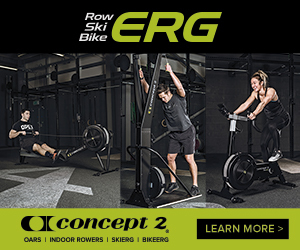Inside Sweat RX
Thorisdottir, Spealler, Sagar, and Battiston speak up
The Skinny on Body Image
Thorisdottir, Spealler, Sagar, and Battiston speak up
By Stephanie Kewin
Behind every athlete’s success lies a story. At CrossFit competitions, you see the super fit pushing crazy weight or sprinting past competitors with steely determination. These athletes often seem superhuman when their muscled, fit bodies and dazzling smiles grace the podium. But when it comes to the pressures of body image in the media, even these athletes we look up to aren’t immune.
The media/body image debate is very chicken and egg. Which came first? Does the demand determine the supply, or vice versa? Today, the intent focus on body shape and composition—and how that determines femininity and masculinity, even worthiness as people—is possibly at its most overwhelming. Perhaps constant and immediate access to social media from any device, anywhere, is what’s made it seem more prevalent. The implications of what a beautiful or ideal body should look like aren’t lost on anyone. Luckily, many of our own top-tier CrossFit athletes are now taking a stand on the body image epidemic. Instead of battling for or against media representation of any one particular body type, the focus is moving towards seeing healthy, un-Photoshop’d bodies on magazine covers, no matter what form or shape they may be. How refreshing.
Annie Thorisdottir
Two-Time CrossFit Games Fittest Woman on Earth
Annie Thorisdottir has been as instrumental as anyone in breaking down these barriers, whether she’s intended to or not. Not only is she a positive role model in the CrossFit community, we recall when she graced the pages of Vogue magazine—yes, Vogue! One of the most renowned mainstream beauty and style magazines in the country featured Annie in a multiple-page article where she discussed strength and how training can increase confidence. A quote from her article: “I’m not preaching that everyone should try to become a CrossFit champion, but I want to show them that training can give them more confidence—and that being strong is beautiful.”
But Annie wasn’t always the confident CrossFit phenom we know today. “I did gymnastics for eight years and, at a certain age, when getting closer to puberty, our coaches started talking about not being too heavy. They’d pinch whatever little fat was there. It was more in fun, but you knew there was something real behind it and most of all it got you thinking about [your body]. Me and the other gymnasts started talking between us about what we were eating and how much. For a period of time during my gymnastics days, I always made sure to have food before we met up for dinners or sleepovers so that I wouldn’t have to eat too much in front of the other gymnasts. And I know they did the same because then we would talk about the one girl that had the most to eat like it was a bad thing.”
If you ever thought you were alone in feeling singled out or bullied because of what you eat or how your body looks, hopefully you can find comfort in knowing that the strong and beautiful Annie Thorisdottir has experienced this as well. Yes, the two-time Fittest Woman on Earth.
For Annie, her saving grace was her parents. She says, “When I was 14 my mom started making me very fatty protein smoothies she gave me after dinner in the evening because she knew I wasn’t eating enough. It wasn’t like I was doing it on purpose but just something that happened. I think that saved me through my final year of gymnastics. My parents were really good at pushing me in different sports and helping me build a better, stronger self-image. We were able to talk very openly about everything.”
When it comes to the media and body image, Annie’s optimistic: “For a long time the media mostly showed pictures of and talked about women’s body types as the skinnier, the better. But I believe things are changing, albeit very slowly, but they’re going in the right direction towards showing more, not necessarily muscular, bodies but healthy bodies. Now I believe the beauty ideal is gradually changing from [unnaturally] skinny to healthy.” This is a change many in the CrossFit community feel strongly about. After the community’s recent outrage expressed through social media about the Photoshop done on some favourite CrossFit athletes in magazines, it’s clear the demand is for real reflections of real bodies, whether that’s a naturally thin person, a naturally curvy person, or a muscular person, as opposed to some unrealistic ideal of what’s beautiful and desirable.
Thorisdottir goes on to explain how she thinks our next generation, our girls, will be impacted by this positive change. “I think it will help them think differently. I like seeing the non-Photoshop’d pictures of bodies because they are real. Those models are used there as role models; therefore, you want the body shown to be real and accessible. If young girls see un-Photoshop’d, healthy looking bodies in magazines and media, that becomes a role model instead of a Photoshop’d character.”
As for the part sports like CrossFit play in the equation, Annie has this to say: “I think it [CrossFit] is such a great tool to a healthy, happy lifestyle. It is easy to get excited about training and progress with CrossFit because you are doing so many different things and learning so much. It’s also easy to put down goals and chase them as you get better. I think CrossFit can help influence the way not just young girls, but society as a whole, looks at body image in a more positive direction, where healthier where means better.” Amen!
“It is not about the way you look; it’s about the way you feel and what you can do.”
“I think CrossFit can help the way society as a whole looks at body image, where healthier means better.”
The Male Perspective
Body image issues aren’t isolated to women. In fact, men face just as much pressure to look and be perceived a certain way. Let’s get the male perspective.
Chris Spealler
Father, 7-Time CrossFit Games Athlete, CrossFit HQ Teaching Staff
“I hope younger guys seeing CrossFitters in the media is inspiring to them. I think it’s all too often that people go to the “steroid” comments. If we can have a community of both young and older men that work hard, take care of themselves both in and out of the gym, and it shows through their physique it’s a positive thing. It shows kids you don’t have to take drugs to look and perform like that, but it does take commitment.”
About his own journey with body image, Chris says, “I have always played sports and chased performance and a body type has followed. Embracing what kind of body type is most productive for the sport you are playing is key. Mine just happens to be CrossFit.” He goes on, “For most guys I hear them talking about how they have to ‘gain’ weight. It’s usually in an effort to be stronger when the real issue tends to be the programming, dedication, or just time under their belts that allows for strength development. For the girls I think it’s great how [CrossFit] has changed the perspective of what ‘beauty’ can be for a younger woman or girl. They don’t [feel like they] have to be, nor should be, rail thin anymore. Being strong and capable is normal in the CrossFit community and that looks different than what people are used to.
“If anything wrestling made things more difficult with my ideas of body comp. Having to lose up to 12-15 lbs to make weight makes you feel pretty dang lean. When I wasn’t like that I would think that I was “fat” when the reality is that I was healthy. CrossFit has allowed me to find a body type that is efficient for all things. That looks different on each person no matter what they were born with, but I think it goes back to chasing performance and not worrying about a body type or image.”
Cole Sager
2014 North West Regionals Champ & 17th Fittest Man on Earth
“The body image phenomenon that has risen in society seems different among men and women when viewed at face value. When you look at the root of the problem you begin to see similarities. A common phrase coined by every male gym-goer is, “Do you even lift, bro?” This is a phrase that puts down men who are “out of shape,” or those who have difficulty getting results. It implies that what is important is not one’s health, family life, social, psychological, or spiritual life. Rather, it points at an external, physical supremacy setting the standard of self-worth.”
About his own journey with body image, Cole tells SWEAT RX, “I used to have self-diagnosed “manorexia.” I had this internal feeling and expectation that I needed to have 6% body fat, 220 pounds of rock hard muscle, and a map of veins running through my body. I could not eat a carb that was not intentionally timed properly in my diet without feeling remorse, guilt, and shame! This was due to the pressure on both men and women by modern society.”
The end message Sager wants to convey? “Develop yourself spiritually, mentally, and emotionally and it will be easier to obtain the physical appearance you desire. What is most important is that you are healthy and can have a life full of longevity and prosperity because you were diligent and disciplined in taking care of your body through proper nutrition and regular exercise.”
Ken Battiston
Red Line Gear Ambassador & CrossFit Athlete
“I think that men and teenage boys feel the same pressure as women do but in different ways. The top athletes in fitness are branded as these huge hulking masses that are ripped out of their mind. We are shown that this is what it is to be a man. It bugs me because there is so much more to being a man than outward appearance. You don’t have to be huge and ripped to provide for a family, be there for a friend, or just be a person who contributes to society in a positive manner.”
Ken goes on to say, “The men we see in media are the examples we are supposed to look up to. From looks alone you can’t gather much, but when the media can do an interview and we get to know what really matters to them, that’s when we connect.”


